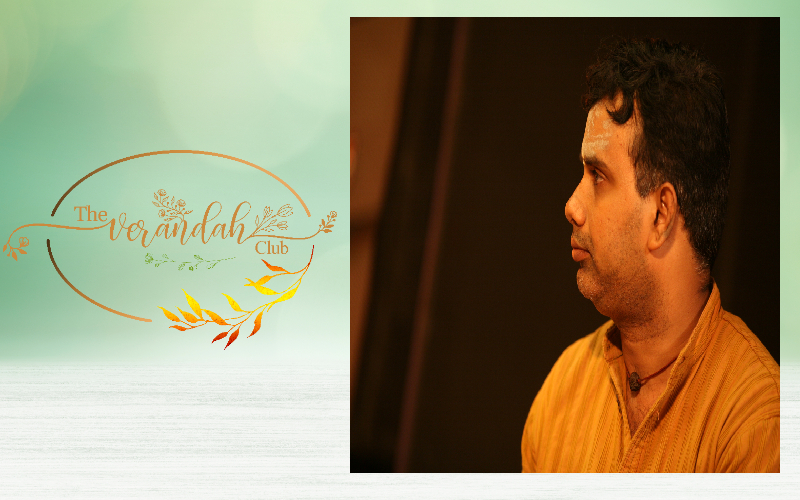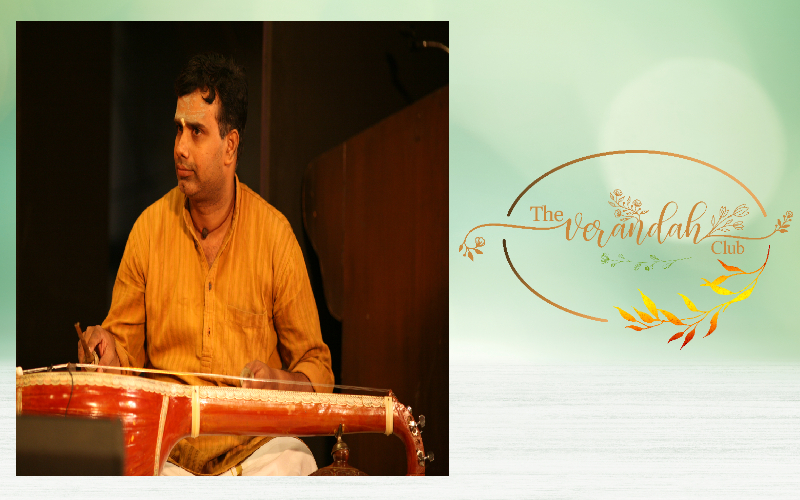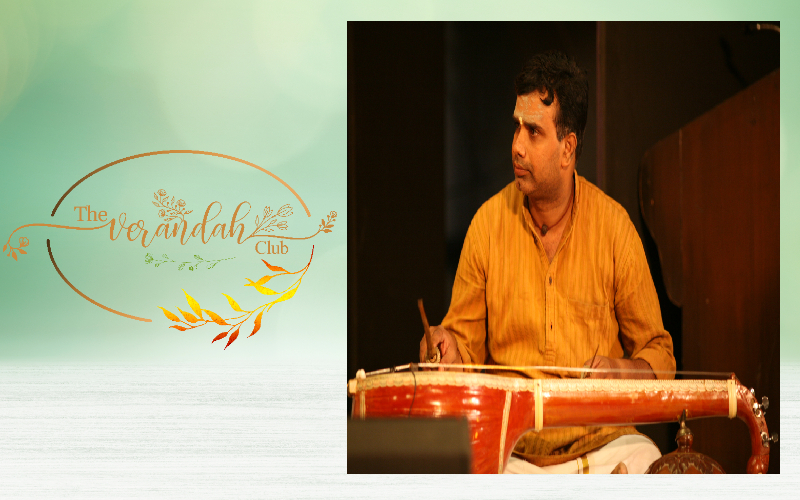The Art and The Artist

“I had done a research on Gethu Vaadhyam and the information that I share here are just few facts from that. During the ancient times, this instrument was called as ‘Jallary’. It could be classified as one of the long forgotten musical instruments of India. The reason was that only few artists had successfully handled this instrument,” stated the Gethu Vaadhyam artist N. Rajaraman.
“The history of the instrument states that traditionally, Jallary is being played only in the Avudaiyarkoil of Lord Shiva at Karaikudi in Tamil Nadu. Only one family of Jallary artists plays and preserves this sacred musical instrument from time immemorial. It is also played only by considerably few artists. Even today, one may not find the popular musical instrument Nadaswaram being played in the temple, instead find Jallary being used for rendition of music. This is the brief piece of history that I came to know about the instrument from my research,” said the artist.
“I came to know from my study that this instrument was well-handled only by two family of artists. One is my maternal grandfather, Sri. T. R. Harihara Sharma. He was the father of legendary Gatam player, Vikku Vinayakram. There was also a story behind why he selected this instrument. He was a regular player of Morsing. After he lost one of his fingers in an accident, he was confused as to which musical instrument he must play. He adopted this instrument because this had to be played using two sticks.
Another artist belonged to the family, who traditionally managed the temple. He was Harihara Bhagavathar. He had rendered service in the Avudaiyarkoil for many years during his lifetime. Harihara Bhagavathar had two sons, one of whom is Harihara Subramanyam. A great part of the credits for making the instrument to suit the modern trend went to Harihara Subramanyam. He played this instrument in many musical concerts and accompanied many musical artists like T. V. Shankara Narayanan, Shiva Balan, Unni Krishnan, Nithyashri Mahadevan etc. Like how the musical instruments, Nadaswaram, Gatam, and Mridhangam, were used as accompaniments for songs, he brought Jallary to life by taking it to stage. He changed the name of the instrument from Jallary to Gethu Vaadhyam. Harihara Subramanyam’s brother did service in the temple by playing it there,” gladly claimed Ramji.

“One day, I received a call from my uncle, Sri. Vikku Vinayakram, who stated, “I like the Gethu Vaadhyam very much and the sad thing is that there is no one to play this instrument. I want you to learn it from Harihara Subramanyam for a year and then this can be used as my Thalavaadhyam in my music concerts.” After this conversation, I took it as an inspiration and approached Sri. Harihara Subramanyam. In the year 1999, I started to learn it from Harihara Subramanyam, while he lived at Mylapore in Chennai. Though I was a Gatam player by profession and used to play it for many musical concerts, I also learnt the Gethu Vaadhyam intensively from him. After my grandfather, T. R. Harihara Sharma, there were no significant players of the instrument in the following generations. I am the third-generation player after him,” humbly quoted N. Rajaraman.
The Jallary-artist further added, “There are not many proofs for the adoption of the name, Gethu Vaadhyam, for the Jallary. There is also prevailing misconception of adopting the name Gottu Vaadhyam for Gethu, which must be seriously taken. The Gottu Vaadhyam is different from that of Gethu. The Gottu Vaadhyam is a melodic instrument while the latter is a percussion instrument and one can commonly find it being used by one of the artists, Sri. Ravi Kiran.”
“In 2000, my first musical concert, as a Gethu Vaadhyam artist, happened at Bali in Indonesia. It was a group percussion festival where participants were from 20 different countries. Vikku sir was the one who accompanied and introduced me to the festival. After the performance, Vikku sir’s group was selected as the best performer among the 20 groups and we were granted the UNESCO award. By being a part of the group and being my first concert with Gethu Vaadhyam, I felt really proud. Even though I felt proud, the real credits go to my instrument and not I. Thereafter, we performed three consecutive concerts at Bali.
My career as a Gethu Vaadhyam artist started there. Over the past 20 to 25 years, as a Gethu Vaadhyam artist, I travelled around 40 countries. Apart from Gatam, I have performed this in various festivals around the globe. Similarly, the Indian Government arranges the ICCR tour and I had participated in the tour for nearly 5 times. I had been to Kenya and travelled around South Africa for nearly 2 months as a part of the tour. We also had done a tour across Europe and China. Wherever I travelled, I did it by being a Gethu Vaadhyam percussion artist in Vikku sir’s group. Amongst all the awards and the appreciations received that which I consider the most prestigious are those that we received at London Royal Festival Hall and Queen Elizabeth hall,” said Rajaram in a happy tone.”
“I am still continuing the beautiful journey with the instrument. I have some unforgettable moments with this instrument which I would like to share. First is that Dr. Balamurali Krishna after listening to my rendition of music using Gethu Vaadhyam, wanted me to play the instrument in his next few concerts which he later arranged at Chennai and Hyderabad.”

“I was fortunate enough to play the instrument on the stage in the presence of legends like Balamurali Krishna, sir and Vikku, sir. I considered those moments to be a gift of God. I was also granted with Vaadhya Kala Vipanchi award from Balamurali Krishna Trust for the artists who have excelled in percussion instruments, which also I considered as an honour. “
The artist carefully added, “Unlike Drums or Gatam, the scope of this instrument captivating the audience is lower because of its nature. It is almost like a Morsing, the limitations of the instrument are inexplicable and cannot be avoided. Because it is a string instrument, the sound of the notes cannot reach a wider audience unless it is amplified, and the notes have to be carefully played else it may go discordant.”
“One of the memorable spiritual experiences happened when I was in a concert at Amsterdam. There was an Aashram at the location and thousands of foreigners had gathered to enjoy our musical performance. I was given 30 minutes to exhibit my skills in Gethu Vaadhyam. After the performance, the Swamiji who was the head of the Aashram approached and thanked me, who said, “There is a wide scope of all other instruments using which many musical variations could be produced. But despite the fact of having low scope for this instrument, you created a musical marvel. Keep it up.” That mesmerizing spiritual experience and those words of Swamiji helped me keep myself motivated and achieve more in my career as an artist of Gethu Vaadhyam.”
The Jallary-artist concluded his narration brimming with humbleness, “Not all the notes of music are known to musicians and artists. In fact, it is present in an unmanifest form within every one of us. I again assert that I do not play the instrument, but it is that divinely music which takes me as a tool and manifests itself through the instrument.”
(Transcribed and Translated by T. R. Surya)
NEXT ARTICLE